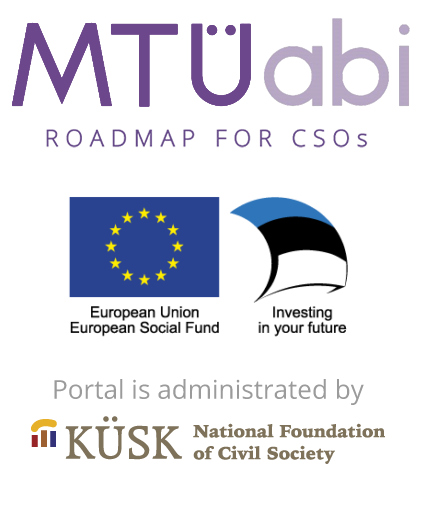PLEASE ALSO SEE:
A non-profit association is a voluntary association of persons founded for the fulfilment of purposes established in its articles of association. A non-profit association is governed collectively, its management bodies are the general meeting of members, and the management board elected at a general meeting. The activity of a non-profit association is regulated by the Non-profit Associations Act.
Members of the management board must perform their legal duties and manage and represent their organisation. Founders and members may be physical as well as legal persons. The minimum number of founders/members is two. It is advisable to have persons with an Estonian personal identification code and capacity to provide digital signatures as founders; any other people may be included as members later on. This allows electronic founding of the association without the need to visit a notary.
In order to found a non-profit association, it is necessary to:
- conclude a memorandum of association which approves the articles of association and establishes the members of the management board (both documents must be presented in the Estonian language or as parallel texts)
- submit an application for the registration of the organisation in the business register
What must be included in the articles of association?
There is no direct necessity to add all details in the articles of association, as many aspects are already regulated by law. The articles of association must contain the following (around ten) agreements regarding the management of the organisation:
- name – the name (name query in Estonian) must differ from the names of other non-profit associations and foundations, but it does not have to be in the Estonian language. The name must not be misleading with regard to the organisation’s activities. The name must contain a reference to the fact that it is an association of persons, e.g. union, society, body, board, club, federation, union, central union, circle, friends, foundation, etc. You can also simply opt for the term ‘non-profit association’ or its abbreviation (‘MTÜ’ in Estonian).
- location – street address, city, municipality; the registered office is entered into the register separately
- objective – describes the changes that the organisation aims to achieve with its activity; does not describe the activities but instead the outcomes. The objective may be quite general
- members– the conditions and procedure for membership in the non-profit association and for leaving and exclusion from the non-profit association; also the rights and obligations of members (or the way these are established – e.g. by the general meeting)
- if departments exist, their rights and obligations
- general meeting and adoption of resolutions– the procedure for calling the general meeting and the term of advance notice; proportion of members of the non-profit association that forms the quorum of a general meeting
- number of the members of the management board or their maximum and minimum number
- the distribution of assets upon dissolution – in order to apply for income tax incentive, it is necessary to write that upon dissolution, the assets will be transferred to another association or legal person under public law that is benefitting from income tax incentives
What must be included in the memorandum of association?
- name
- address to contact the management board. When the entire management board is located in a foreign country, a contact person that corresponds to Estonian requirements must be established. Some service providers can offer this service to CSOs
- purpose (the same as in the articles of association)
- the names and residences or registered offices, and the personal identification codes or register codes of the founders;
- the obligations of the founders – such as covering the costs related to the foundation of the association (state fees)
- the names, personal identification codes and residences of the members of the management board (if a person acquires a personal identification code later, for example through e-residency, then this can be added in the register)
Minors can establish a non-profit association with the consent of their guardians, but they cannot be members of the management board of the association. In this case, adults must be elected to the management board of the association. Minor founders also cannot register the association electronically in the company registration portal; in this case, the foundation proceedings must be executed at a notary. Minors of at least 15 years of age do not need to acquire the consent of their guardians when founding a religious association or an association with the objective of organising or engaging in youth work.
It is possible to take the documents and visit a county development centre for a free consultation before submitting them in the register. Both documents must be presented in Estonian language or as parallel texts.
How to submit an application in the register?
After the approval of the articles of association and the memorandum of association, a petition for entry into the register must be submitted. There are two ways to submit the petition:
- electronically in the company registration portal if all founders and the elected management board members are able to provide a digital signature (with an Estonian, Latvian, Finnish, and Belgian ID-card)
- in a notary’s office
Electronic establishment in the company registration portal can be used when all founders and members of the management board can provide a digital signature. In this case:
- fill in the required fields on the petition for the entry of a new enterprise directly in the company registration portal
- upload the articles of association and the memorandum of association to accompany your petition
- enter the names and personal identification codes of all founders and members of the management board
- ask all persons to log in and provide a digital signature for the petition
- pay the state fee in the amount of 20 euros (in the system via a bank link)
- submit the petition for processing
If all documents are in order, the register will make an entry within five working days.
If any deficiencies are discovered, the register will notify the founders and set a term for the elimination of deficiencies. If you eliminate the deficiencies for the set term, you do not have to pay the state fee again.
Foundation documents are submitted through a notary when one or several members of the management board are unable to provide a digital signature. In this case:
- the articles of association and the memorandum of association are signed on paper, after which all members of the management board take the articles of association to a notary’s office to sign the petition;
- the notary submits a petition to the register, collecting a service fee of 40–50 euros for all proceedings; the sum depends on the number of signatures, i.e. the number of the members of the management board. The state fee (20 euros) can be paid at the notary’s office.
- contact details (telephone number, e-mail, home page) must be submitted to the register with the petition








